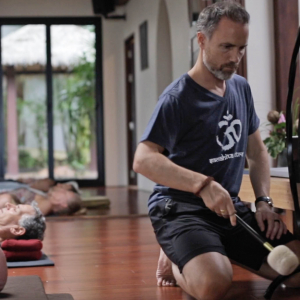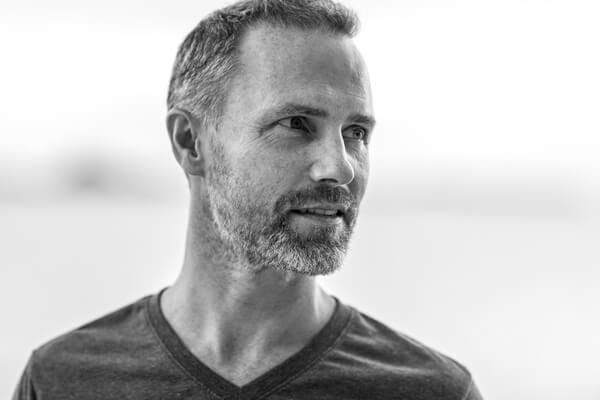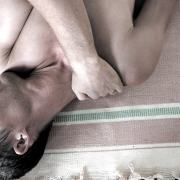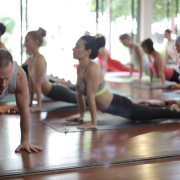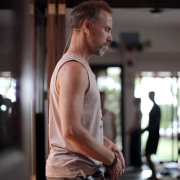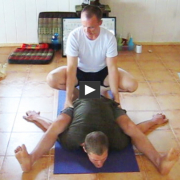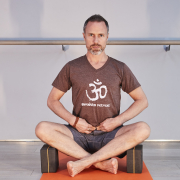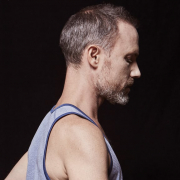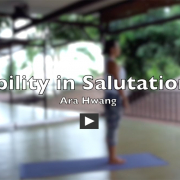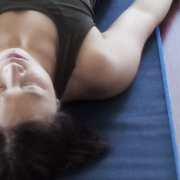 https://samahitaretreat.com/wp-content/uploads/2018/10/sleeping.jpg
598
1039
Dr. Paul Dallaghan
http://samahitaretreat.com/wp-content/uploads/2024/01/samahita-logo-v2.svg
Dr. Paul Dallaghan2018-10-04 05:29:412023-11-02 04:40:167 Tips for Better Sleep
https://samahitaretreat.com/wp-content/uploads/2018/10/sleeping.jpg
598
1039
Dr. Paul Dallaghan
http://samahitaretreat.com/wp-content/uploads/2024/01/samahita-logo-v2.svg
Dr. Paul Dallaghan2018-10-04 05:29:412023-11-02 04:40:167 Tips for Better Sleep10 Questions on Yoga – Answered by Paul Dallaghan
Paul was recently posed some questions on how and why I got into yoga and eventually started Samahita. It has become an interview online and so we reproduce the questions here.
How long have you been practicing yoga and why did you start?
25 years
I was in my early 20s and curious about life on various levels. At 16 I had “opened up” to inner experience and had questions ever since. Yoga was not popular then but it intrigued me for some reason. Once trying I found the physical part quite intelligent and incredibly involved across my whole body. But the spiritual, meditative and devotional side drew me in and kept me. All that was clear within the first year.
What do you believe is the essence of yoga?
To look within to develop an understanding of what is actually “real” and so see and read the game of life that goes on around us. In so doing your perspective changes and with it your behavior, especially in treating others, which can only be with kindness from such an understanding.
What’s your mission as a yoga instructor? Who are you trying to reach and why?
My aim is to continue deeply and sincerely in practice, to understand the inner nature, and so from that experience help others tune in, wake up and share clarity, strength and a good heart to others in turn around them.
What is the greatest gift yoga has given you?
A state of inner centeredness – balance, clarity, calm and helping to open my heart.
Have you always integrated a meditation practice with yoga?
Yes. Though the approach to the meditative focus can shift based on the nature of the practice and audience, but personally the practice of yoga has always been an inner journey and for that reason has kept me sincerely interested in the practice, right from the start.
Tell me about the teachers you have studied with and what you have learnt from them?
My first yoga class was in the Sivananda tradition. There was no one teacher who worked with me there but I spent five years engaged in their ashrams and practices. I was mostly drawn to the environment and devotion. As a result I looked elsewhere for asana stimulation and pranayama wisdom. Mid-1990s New York was an early growing ground for yoga practice. I was living in a small room that happened to be above Jivamukti and so spent time with Sharon Gannon a lot. A little later I taught for Cyndi Lee and her Om studio in NYC. Within that time I became a dedicated ashtanga vinyasa practitioner, was influenced by the words and style of Richard Freeman, and then lived in Mysore for about 5 months a year for 6 years. However, my primary teacher, for pranayama and the inner spiritual work, has been Sri O.P. Tiwari, head of the Kaivalyadhama Yoga Institute, and one of the few genuine teachers (masters) of pranayama. I have been his senior student for 20 years and continue the legacy of the teachings of Swami Kuvalayananda. I have had the unique opportunity to be trained to the highest level in this pranayama tradition and Krishnamacharya’s asana tradition, as well as years in Thailand in the Buddhist meditative practices, including time in Tibet.
How did you come to set up Samahita?
In 2001 I felt a strong urge to leave New York and study-practice in India. Along with my partner, Jutima, we packed up and left. And this is what we did – devoted to study and practice. Her background was Thai so we also visited Thailand. We found it to be an ideal place for practice, growth and living, far more palatable in a way than India, though India was the initial call. In 2001 practically nobody was teaching in this region and very little yoga existed in Asia. But there was a call to start something, do it in a location that people could come and spend time while benefitting from the nature. After running a few programs at other places we rented we were dissatisfied with their standards of food, hygiene and room for practice. So without a business plan the early Samahita, Yoga Thailand, was born in 2003. It started and has grown from pure devotion and dedication to providing a space of support and practice, health of mind and body, that is good for people in their lives, that they can learn and carry home with them and enjoy the company of other similar souls. That same interest and motivation exists today, even stronger.
How have the teachings of yoga evolved over the years in your opinion?
From a personal perspective I have studied and practiced intensely, directly with the masterful teacher. As a result the understanding and experience has grown so the teaching output has refined and become sharper and more helpful. I see this as a positive evolution of teaching in me personally. However, I have noticed that this is not necessarily the case in the marketplace as many make it popular before trying to understand what this practice is about themselves. So in many ways the base yoga teaching has spread and grown incredibly but quality in many circles is dubious. If people can take time to learn the techniques correctly, understand why and how to do them the evolution ahead is positive. I am committed to moving the field forward with scientific research as this is a way to remove the hype, misunderstandings and erroneous statements, help people understand why to do a practice and how it works. I am undertaking the largest and most scientifically robust study on yoga (in 2019) to help the evolution of the field of yoga. The essence of yoga and what it is about is timeless, to solve this riddle of who we really are. However, society makes advancements and the practice and integrity of yoga should keep up with the needs of the people, how the body works, how we handle the burden of current mental challenges, how we take care of this planet, and not get stuck in either the path of “yoga is ancient and should not change” nor “I am so relevant and can do this so follow me and listen to me about yoga”. These two paths, which currently exist in the “market” are devolution. Yet yoga embraces and is all about evolution – open-minded, honest, and ready to adapt to changes around us. But the focus of why we are doing yoga must not be lost.
What is the goal of yoga as you see it? Beyond the walls we often construct, how are we all truly connected in this practice?
The goal of yoga is to understand who you really are, to experience that. This means everything you define life by is not actually “real” or our genuine nature. It is behaviorally valuable and important. But who we are can only be accessed by looking within. In so doing love, openness and trust are felt, not as an exclusive property by you feeling that, but by us all tapped into something that is shared.
What advice would you give to a student who is thinking of becoming a teacher?
Make sure you connect with practice and try to understand what you are doing and why. You will then be more sincere and motivated to keep it up. If it is done regularly going ahead in to the future then you will experience something and have a better understanding of how yoga works, how to do the practice, and in your heart you will feel why it is worth doing. This is then the incredible gift to share as a teacher to others as you continue your own path.
Dr. Paul Dallaghan’s expertise with breathwork, body and meditative practices comes from three sources: (1) three decades of daily dedicated practice and teaching these techniques; (2) uniquely acknowledged in the Yoga tradition by the title of “Master Yogi-Prānācharya (expert in breath)”, following an immersion in the original culture through one-on-one direct training in practice and study of ancient texts; (3) a PhD in doctoral scientific research at a leading US university (Emory) covering both the tradition and science of yoga and breath practices in terms of stress, health and aging. As a result, Paul occupies a unique space to impart genuine teaching and science on the breath, body, and meditative practices, seen as a Teacher-of-teachers and identified to carry on the tradition of Pranayama. His sincere and ongoing role is to teach, write and research, to help put out experienced and authentic information on these areas of how we live, breathe and be, to help people improve their mental and physical health, and live more fulfilling lives.
For more on his background see his bio
More from the Samahita Blog
